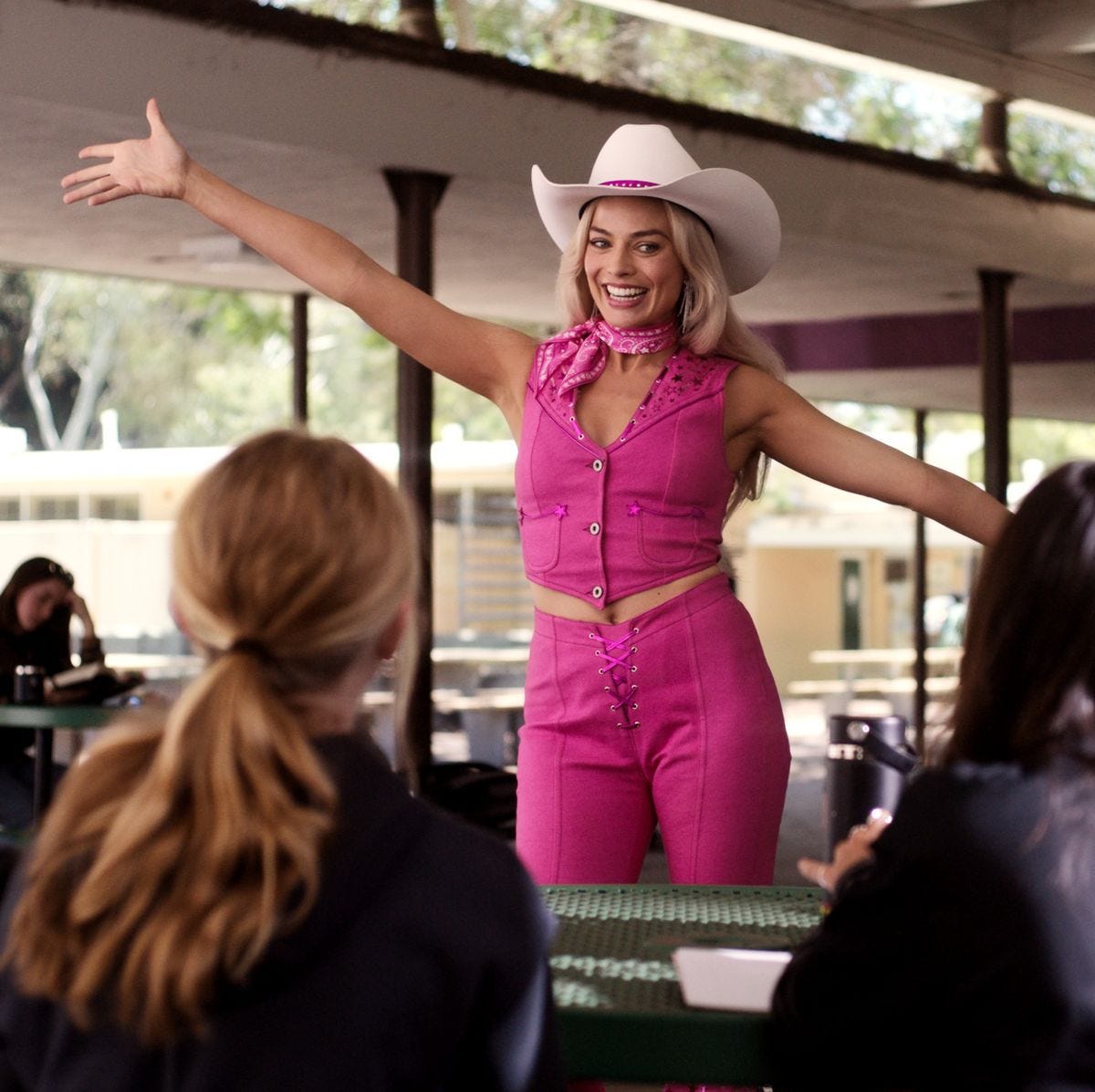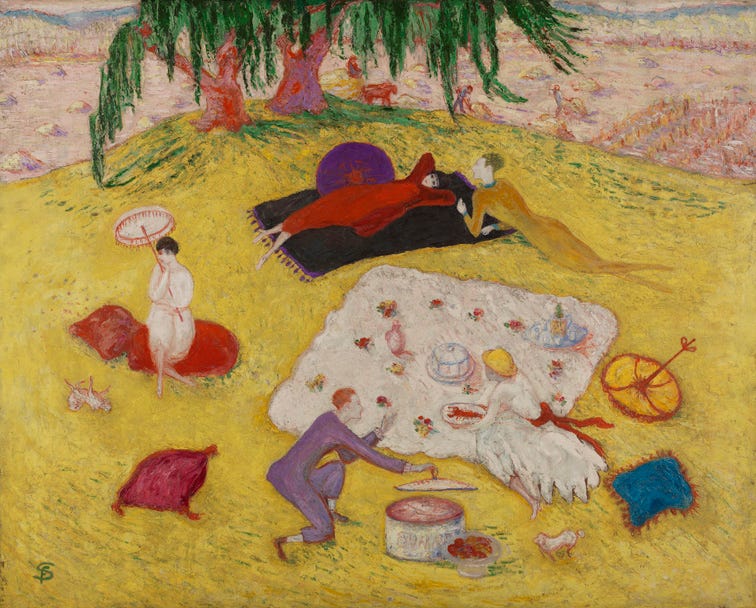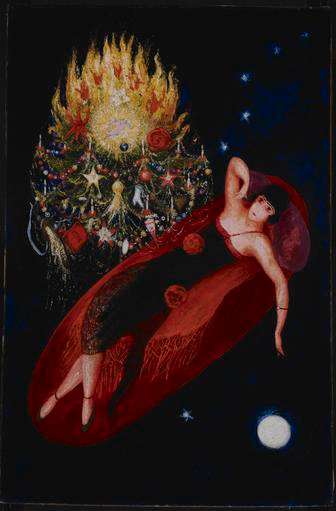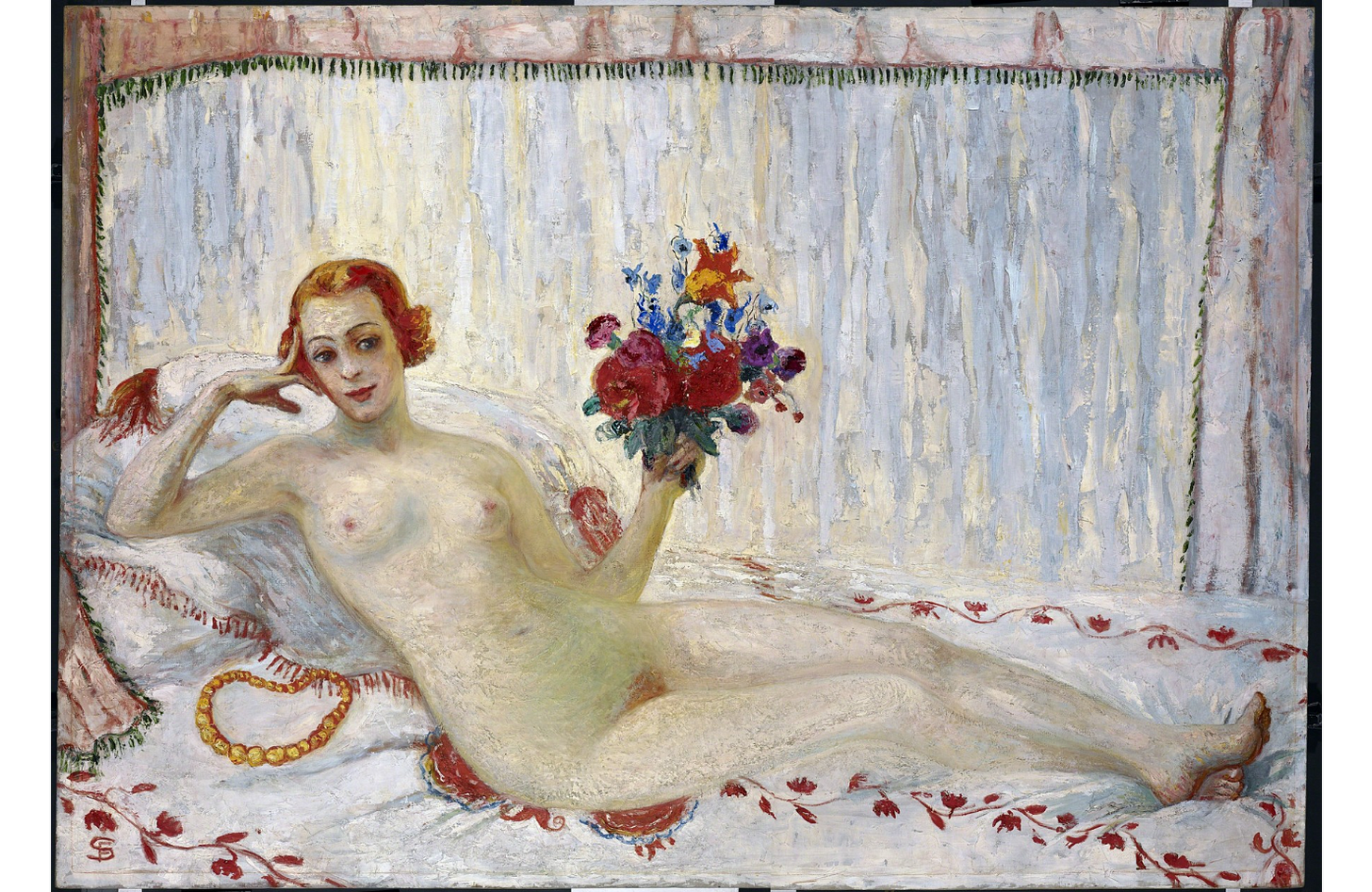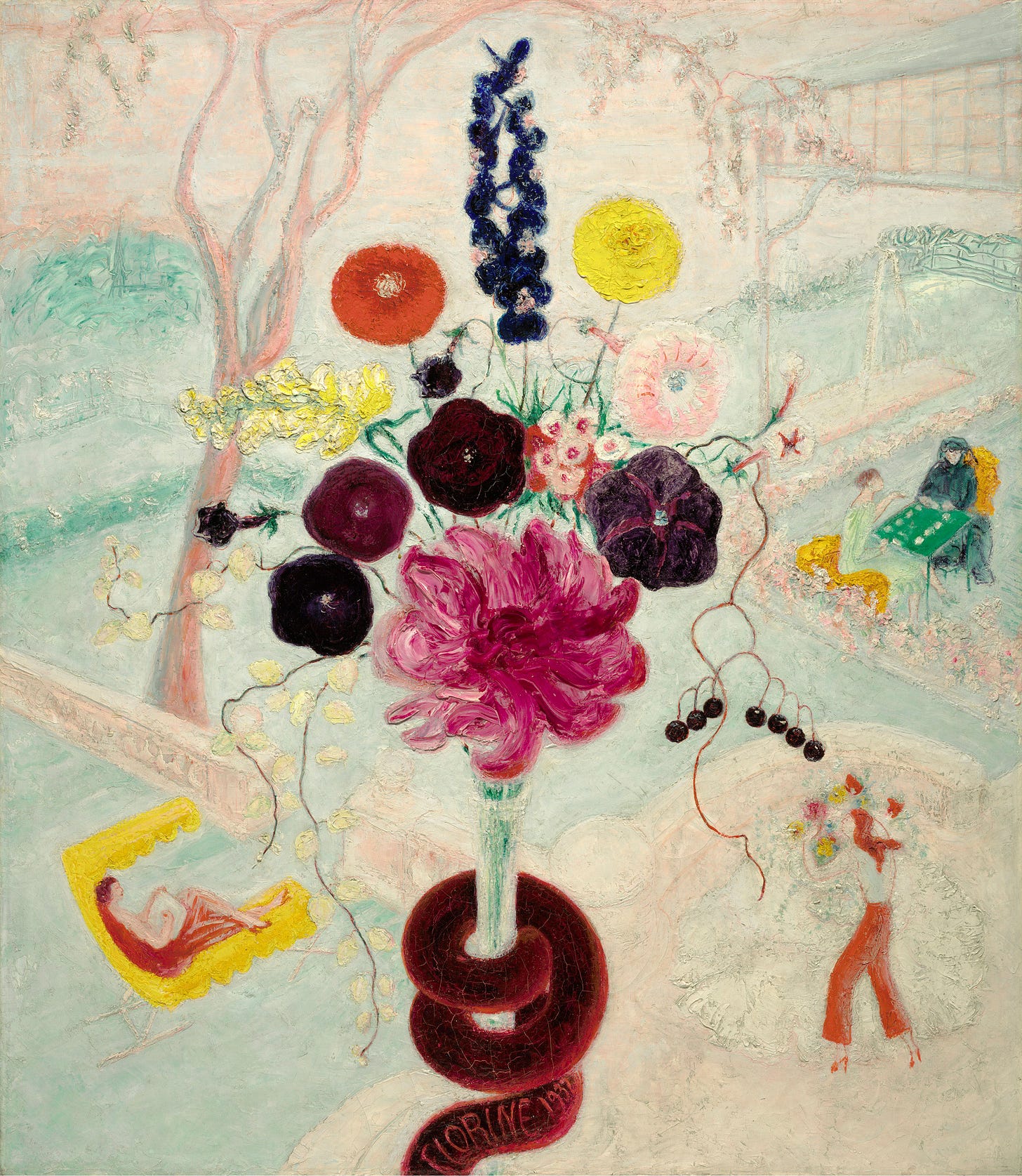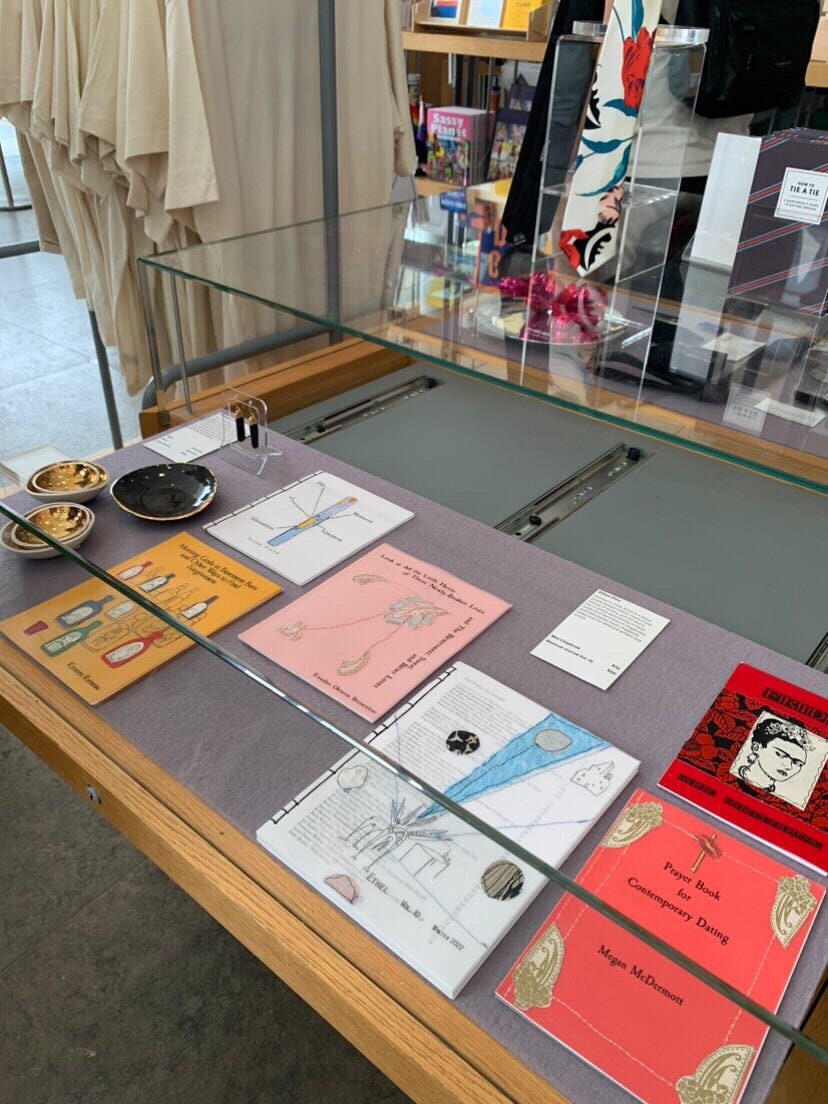3 inspirations about women's creating and creativity, & poetry news
Alicia Suskin Ostriker, Florine Stettheimer & Barbie oh my....a.k.a. Am I entering my poetess era???
If you want to skip ahead to some poetry news, please keep scrolling down to the bottom of this post, thanks!
This week I finished reading Stealing the Language: The Emergence of Women’s Poetry in America by Alicia Suskin Ostriker, a book published originally in 1986 that I stumbled across in one of the Pioneer Valley’s fantastic used bookstores (shout out to the Bookmill in Montague). Ostriker ushers the reader through the history of women’s poetry up through the 20th century, tracing some general themes of, and shifts in, women’s poetics. I loved this book and am planning on diving back into it soon, both to create a reading list from its references (perhaps for the eminent Sealey Challenge - a challenge to read one poetry collection everyday through the month of August) and to soak up more of its insights.
One section of the book explores “Women Poets and Revisionist Mythology” and speaks to the way that women poets challenge “the male creator-female muse convention.”
Ostriker quotes from Mary Daly in this section: “Women have had the power of naming stolen from us . . . To exist humanly is to name the self, the world and God . . .” The women poets written about by Ostriker take on the act of naming. They become creators when so often women have been the created, molded thing — the object.
I couldn’t help but read these words and think about my other obsession of the moment — Barbie.
**spoilers ahead**
There’s a lot that could be said about the various comments the movie makes about womanhood, femininity, patriarchy, etc., but for my purposes today, I’m most interested in one of the final scenes where …..
OK I REALLY MEANT IT ABOUT SPOILERS……………
where Barbie is talking with the creator of Barbies, Ruth Handler, and says to her, “I want to be a part of the people that make meaning, not the thing that is made.”
For me, Alicia Suskin Ostriker’s book and this moment in Barbie speak to each other. Barbie, this icon of womanhood, a false representation or ideal of womanhood, is longing for the very same thing the women poets analyzed by Ostriker long for: to be part of those who make meaning, to be creators rather than be confined to the roles of creation or muse; Barbie and the poets want to mold and sculpt a reality, rather than be molded, sculpted, and used. Women’s ability to view themselves as creators, or as having creative agency, is challenged regularly by our society, and has been challenged through history; women have faced down, and sometimes overcome, the tendency for feminine creativity to get channeled into a narrow subset of activities, or for feminine creativity to become about reproduction alone.
**end of spoilers**
This weekend, I stumbled upon one more source of inspiration in thinking about women’s creating and creativity. Cleaning out my car, I found some art books I had picked up a while ago, again at a wonderful used bookstore (I think probably the same one - the Bookmill!). I started flipping through a book I bought on women artists and found myself becoming fascinated with Florine Stettheimer, a wealthy New York City artist who lived from 1871 to 1944.
Descriptions of Stettheimer’s work sound like they could be easily attributed to the hyper-feminine aesthetics of the Barbie movie:
“The Stettheimer style is gossamer light, highly artificed and complex…Stettheimer’s paintings seem as though they might best be considered an expression of Camp sensibility at its highest…”
or
"…a review from 1931, the painter and critic Marsden Hartley commended Stetttheimer’s paintings for their ‘ultra-lyrical expression of an ultra-feminine spirit.’ Parker Tyler, the author of her flawed 1963 biography, defended the painter against this ‘ultra-feminine’ characterization, arguing that it precluded comparisons with male artists. But Stettheimer didn’t mind and even wrote a letter thanking Hartley for understanding her vision, which suggests that she didn’t simply stumble into her style of painting but actively pursued femininity as an aesthetic ideal….The feminine look of it was no incidental feature, but precisely what made it so subversive.”
or
"Even her party paintings, which seem on the surface like pure candy, bite back.”
Stettheimer’s work feels connected to the thinking Ostriker’s book and the Barbie movie inspired in me. What does it meant to take women’s art/creation/creativity seriously? And related but not synonymous with that, what does it mean to take femininity in art seriously? Can (or should) we take frivolity and lightness seriously? How is femininity a tool that women creators use, and to what ends? And how does femininity transform in the hands of a skilled, or subversive, poet or artist or filmmaker?
At the beginning of Ostriker’s book, she describes some of the history of the word “poetess.” Women writers have often chafed against this designation or attempted to avoid it. It has derisive connotations — associations with femininity, with sentimentality. Is there anything that might be gained from embracing the term or identity poetess, in solidarity with women whose work is dismissed for its emotion, its sentiment, its domesticity?
I have no full answers on any of these questions, except that I treasure standing a the long history of women creators, with varied relationships to femininity and feminine aesthetics, asserting creative agency despite the naysayers. I hope to use this upcoming Sealey Challenge to continue intentionally immersing myself in the works of women poets!
Poetry news:
*Are you near Stonington, Maine, or know someone who is? I’m the featured reader at the August 1st open mic at Stonington Public Library. That’s this Tuesday, at 6 p.m. Please join us! I will be reading from Jesus Merch and may even read a few new unpublished poems.
*A new review of Jesus Merch, written by Kayla Ketner, appeared in the lovely Fare Forward this week. Please check it out if you’ve been on the fence about buying a copy or if you’re just curious for another perspective on the book! Or, if you want all my love and admiration, send it along to a friend you think might be interested in the book.
I particularly appreciated Kayla’s ending thoughts: “McDermott’s poems help me to do just that, to look past the commercialized and misguided aspects of modern Christianity and seek the hope and truth beyond them.”
*My first chapbook, Prayer Book for Contemporary Dating, is now available for purchase at the Whitney Museum gift shop in New York City. This is simply the coolest thing ever. If you’re in NYC, check it out! I’m so grateful to Ethel Zine & Micro-Press for the beautiful work on this chapbook.
*I have forthcoming poems slated for publication in Stone Circle Review & U.S. Catholic! I’m so excited to get new work out in the world soon and to begin shaping what will perhaps be my 2nd full-length book. Stay tuned for news on that front!
*Need some Sealey Challenge reading? My aforementioned chapbook, Prayer Book for Contemporary Dating, is available as a free PDF here. My second chapbook, Woman as Communion, can be purchased directly from Game Over Books or picked up on Amazon/other retailers. My full-length book, Jesus Merch: A Catalog in Poems, is available from Fernwood Press or from a variety of other retailers, including Amazon, Barnes & Noble, and Bookshop.org. I am also selling signed copies for $20. Comment if you’re interested!





